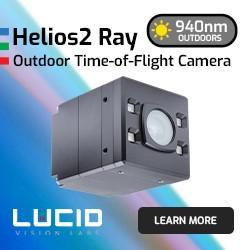Meet BeagleBone, the new $89 open source hardware platform, giving electronic enthusiasts a smaller, friendlier and more affordable treat
Credit-card-sized development board enables easy hardware expansion and provides fast development with single cable and 10-second Linux boot
DALLAS, Oct. 31, 2011 -- Innovators: Get ready for the latest open source development platform that easily enables incredible inventions like wirelessly networked autonomous robots, self-teaching electronics education kits, intelligent digital signage, flexible retro-gaming devices, home automation and much more. BeagleBoard.org is pleased to introduce the newest member of its wildly popular pack - the BeagleBone. Three years ago, BeagleBoard blurred the lines between desktop and embedded computing, paving the way for rapidly accelerated open source innovation on ARM® processors. At $89, the new BeagleBone development board, based on a Texas Instruments (TI) Sitara™ AM335x ARM Cortex™-A8 microprocessor, features the best open source development value for hobbyists, developers and engineers. It delivers bare bones hardware with access to interface signals for sensors and controls, while eliminating the need for additional equipment with a single cable development environment.
"It's exciting to see BeagleBoard.org developers release more amazing open-source hardware for the community to use and share," said Limor Fried, engineer, Adafruit Industries. "BeagleBoard, and now the BeagleBone, are fantastic platforms for any open-source hardware developer to learn from and build upon."
Easy and extensive hardware, connectivity with Linux and access to open source community
Developing projects with sensors and controls on the BeagleBone is easy with the flexible Linux kernel that reduces complication of learning input/output (I/O) through the use of existing drivers and interface applications. BeagleBone runs full-featured Linux, including native scripting and compilation tools. It also provides on-chip Ethernet-MAC, USB with PHY and A/D converters, along with countless other peripherals, to minimize the number of extraneous components needed and further simplify design. BeagleBone can be used as a stand-alone development board or as an add-on to the existing BeagleBoard, BeagleBoard-xM or desktop computer to attach thousands of readily available sensors and peripherals. Featuring more than 60 configurable industry-standard 3.3 Volt I/Os, enabling five serial ports, two I2C buses, timers, power management modules, SPI and more, BeagleBone provides easy connectivity to additional peripherals for greater design flexibility. Developers also have access to the open source community, which provides a large number of I/O references to help with programming. Continual support is also available through BeagleBoard.org, one of the most active open source hardware communities today.
"As an open source developer, I'm always looking for the latest and greatest open platform to run my embedded applications," said Robert Nelson, application engineer, Digi-Key Design Support. "With the BeagleBone, I'll be able to run the same, full Linux OS as my development PC but on the perfect low-power ARM microprocessor - and in a small embedded form factor with all the I/O my next application needs."
Start development in five minutes with a single cable and 10-second boot!
Innovators don't have to wait long to begin their latest creation. BeagleBone simplifies hardware and software set up for the board, allowing developers to get started in five minutes with the pre-installed Angstrom Distribution and node.js with Cloud9 IDE. Using a single USB cable, developers can power their board and point the Web browser to the board for friendly development and compatibility with Windows, Mac and Linux. The integrated USB hub further enables additional, simultaneous low-level serial console and widely supported JTAG hardware debug connections, including TI's Code Composer Studio™ integrated development environment (IDE). Starting public beta development now, on-board example libraries are available for education and rapid prototyping to further speed development.
"We're big fans of embedded systems at our office and think Cloud9 IDE for BeagleBone is an amazing use case. It makes writing code for your device as easy as plugging in and connecting to a port with a browser," said Rik Arends, chief technology officer, Cloud9 IDE. "We're looking towards supporting embedded development from the cloud in the future. This way, our users will have all the benefits of keeping code safely online, with the ability to easily distribute to multiple devices."
Featured Product

